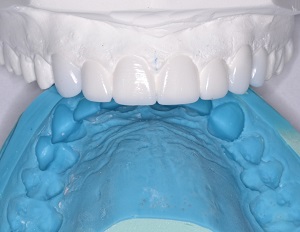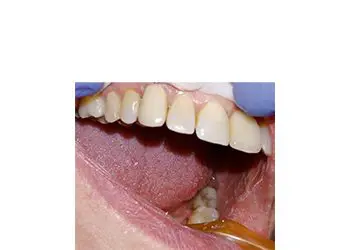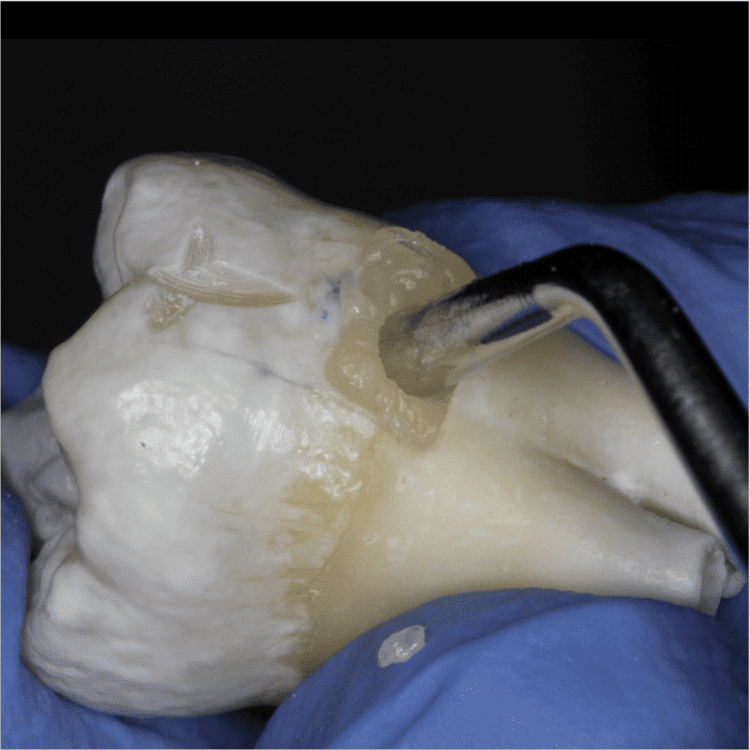by Robert Ho, D.D.S
Our patient presented with a distogingival carious lesion and leaking occlusal filling close to the pulp on his lower left second molar (#18). There is bone loss, and the discussion to see the periodontist is ongoing. From the restorative perspective, how are we going to seal the distogingival margin that lacks enamel for effective bonding? What materials are appropriate to ensure success, provided our patient is cooperative and adheres to good oral hygiene?
To place a crown, we would have to obtain suitable retraction for an accurate impression of the crown margins, which would violate subgingival biological width requirements in this case. Amalgam would be a good choice if we could ensure that our margins are free of flash in the deepened sulcus area. But amalgam is not a bioactive material and is not capable of interacting with saliva to recharge itself and protect the tooth. We could seal the distal margin with glass ionomer and overlay with composite or amalgam, but glass ionomer is the weakest of all permanent restorative materials, and even when done properly, it tends to wash out over time. So it comes down to ACTIVA BioACTIVE-BASE/LINER (Pulpdent) as my material of choice.
Isolation is critical for success, and I used the Isolite system since rubber dam placement is challenging for a distal cervical lesion on a second molar. After removal of decay and application of a sodium diamine fluoride antimicrobial solution, I used Activa base/liner as a base on the pulpal floor and as the definitive restorative material along the entire distogingival margin up to the level of the pulpal floor. This moisture friendly material interacts with saliva and can be successful in difficult to restore areas where conventional materials fail. After placing and curing Activa Base/Liner, I applied phosphoric acid etchant and a bonding agent, and placed a nano-composite occlusally as a permanent restoration. This is an open sandwich technique with both Activa and the composite exposed to the oral environment.
The patient’s symptom of mild sensitivity went away within a few days, and to my pleasant surprise, a bite-wing image taken at the 10-month recall visit shows a restoration with marginal seal completely intact. The patient is comfortable and extremely happy, and I am cautiously optimistic that this could be a solution that lasts considerably longer than alternative treatments I have attempted in the past. Modern restorative materials such as Activa BioActive are effective for managing clinically challenging situations. Let the science do the talking!
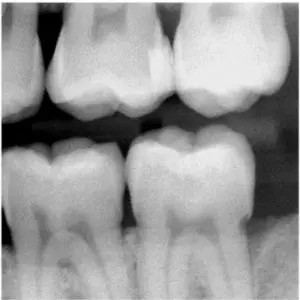


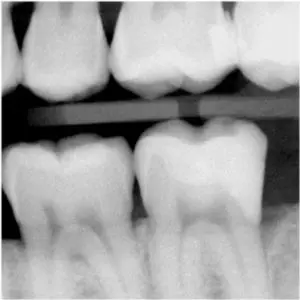
About Dr. Robert Ho
Dr. Robert Ho maintains a private practice as a general dentist in San Francisco where he has practiced for over twenty-five years.



